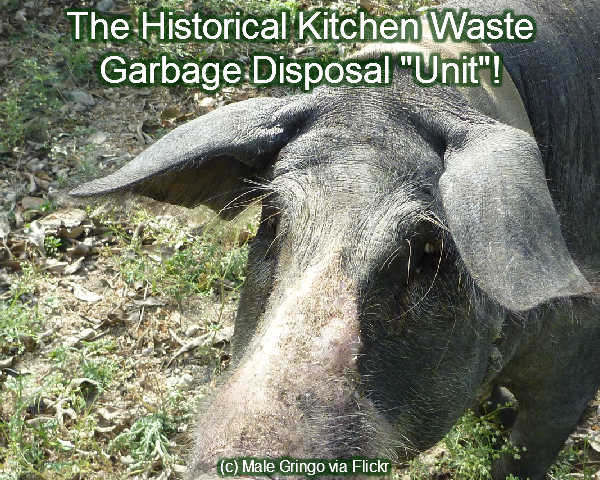 Outside the US, garbage disposal simply doubles as another term for waste disposal, from the definition of garbage as rubbish or waste, and it is most often used to refer to domestic refuse.
Outside the US, garbage disposal simply doubles as another term for waste disposal, from the definition of garbage as rubbish or waste, and it is most often used to refer to domestic refuse.
However, in the United States garbage disposal has another meaning, and a garbage disposal is the chopper unit under the sink.
So, if you are an American and you have a garbage disposal, you will know that it's one of those indispensable appliances of the modern kitchen. They chop up the bits and pieces of food waste, allowing them to be washed away when the tap runs. (These are sometimes called garbage disposers, waste macerators, waste choppers, and sink grinders depending on where you live.) They are especially useful in high rise living where these types of wastes are unsuitable for throwing down a rubbish chute, due to the residue they may cause on the chute.
They are low-maintenance when used as intended and keeping them in good condition isn't difficult. The manufacturers recommend regular cleaning with ice, salt, and cold water will keep it running smoothly for the long haul. You can also give them a good rinse out by plugging the sink, filling it with a few inches of water, and then hitting the disposal button. Then, and let it drain to flush the whole unit at once.
Examples of Garbage Disposal Units
The InSinkErator Evolution Essential 3/4 HP is one model which gives continuous-feed Garbage Disposal and is suitable for use in a variety of kitchens. It has what the manufacturer calls “MultiGrind” technology that allows it to rip through hard-to-grind food waste, such as rib bones and artichokes. The grinding chamber is crafted with stainless steel for strength and has SoundSeal technology, making it at least 40% quieter than standard disposers.
The GE Profile Series trash compactor, is described as a powerful grinding action reduces food waste to small particles, making a GE disposer safe for any properly sized septic system. An advanced insulation package is provided which assures quieter-than-ever operation.
Safety Note
It is NEVER safe to put your hands in any garbage disposal unit. The blades are very sharp and the unit could accidentally turn on. If something becomes stuck in the unit's blades, use the supplied manufacturer's tool for removal or a long wooden spoon handle. You may have to push a reset button. Refer to your manual for proper removal of unwanted items from the unit and resetting.
Sustainability
While chopping up vegetable waste matter is very convenient, and hygienic as a waste disposal method is it sustainable when that additional organic treatment load goes into the sewer and ends up in a municipal wastewater water treatment works (WWTW).
A number of studies have been done over the years on this, and these have reported that it is a highly effective way to dispose of organic waste, as long as the WWTW is designed to take that waste load, however, the additional cost of converting all houses to own waste disposal units on existing systems is not something which most WWTW could cope with without huge additional upgrading requiring massive investment. Where that is the case, sending your waste out with the rubbish collection is likely to be the most sustainable, especially if the kitchen (food) waste is treated at an Anaerobic Digestion Plant.





